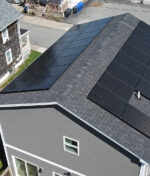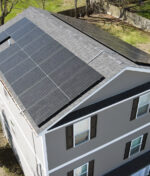
Understanding Rhode Island Solar Energy Systems
Rhode Island is carving out its own path in solar energy. With its picturesque landscapes and commitment to clean energy, the state presents a unique opportunity for homeowners to harness the benefits of solar technology. Understanding Rhode Island solar energy systems can lead to a greener, more sustainable future for you and your family.
Switching to solar energy offers a range of perks, from reducing monthly utility bills to minimizing your carbon footprint. These benefits are especially relevant for Rhode Island residents, where energy costs can fluctuate and environmental consciousness is on the rise. By adopting solar, homeowners can enjoy not just financial savings but also peace of mind from sustainable living. Let’s explore how Rhode Island’s climate and solar incentives make it the ideal location for this clean energy source.
What Makes Rhode Island Ideal for Solar Energy?
Rhode Island’s climate plays a pivotal role in making solar energy a smart choice. While the state experiences varying weather, there are plenty of sunny days that make solar panels efficient and effective. Spring and summer offer long daylight hours, maximizing energy production and optimizing solar panel functionality. Even on cloudy days, systems can capture diffuse sunlight, allowing energy generation to continue.
Rhode Island offers attractive solar incentives to encourage homeowners to make the switch. These rebates and tax credits can significantly reduce the upfront costs associated with solar panel installation. This financial assistance comes at a time when residents are looking to cut down on expenses while fostering a healthier planet. Not only does solar energy save money, but it also reduces reliance on fossil fuels, lessening the environmental impact.
Solar energy provides significant environmental advantages for homeowners in Rhode Island. Solar panels reduce greenhouse gas emissions and contribute to a cleaner environment, aligning with the goals of environmentally conscious residents. It’s a transition that brings long-term benefits for individual households and future generations. Understanding the incentives and climate benefits reinforces why investing in Rhode Island solar energy is a wise decision.
Key Components of a Rhode Island Solar Energy System
Choosing the right solar energy system involves understanding its key components. These elements work together to convert sunlight into electricity for daily use. Let’s break down the essential parts:
– Solar Panels: These are the most visible part of the setup. Various types are available, but it’s important to select panels in Rhode Island that can withstand the local weather. Panels designed for both efficiency and durability are ideal.
– Inverters: While solar panels capture sunlight, they produce direct current (DC) electricity, which needs to be converted into alternating current (AC) to power household devices. Inverters transform the energy your panels generate into a usable format for home appliances. A reliable inverter ensures smooth daily operation.
– Battery Storage: Rhode Island weather can be unpredictable, so having a battery storage system is beneficial. Batteries store excess energy produced during sunny days for use when the sun isn’t shining. This means consistent energy supply without heavy reliance on the grid, even on cloudy or stormy days.
Installation Process and Considerations
Setting up a solar energy system involves more than just placing panels on your roof. Here’s a rundown of the typical process:
1. Initial Assessment: Evaluate your energy needs and analyze your roof’s suitability. This determines the best placement and size for maximum efficiency.
2. Design and Permitting: Create a custom design based on the assessment. Proper permits ensure compliance with local regulations, which can vary in Rhode Island’s specific neighborhoods.
3. Installation: Trained professionals mount the panels and connect them to your electrical system. This phase requires precision to avoid future issues and ensure secure panel placement.
4. Inspection and Activation: Final checks ensure correct installation. After inspections, the system is activated, and you begin generating solar power.
Proper installation is key to a system that runs smoothly for years. Regular maintenance helps keep it in top condition, like a car that needs routine tune-ups. Simple tasks, such as cleaning panels and checking connections, can greatly improve performance and extend your investment’s life.
Maximizing Your Solar Investment
To get the most from your solar system, consider strategies that enhance performance:
– Optimal Panel Placement: Ensure panels are positioned to receive the most sunlight, ideally facing south for maximum energy capture.
– Energy Management: Monitor your energy consumption habits. Adjusting usage to coincide with peak solar production times can maximize savings. Use timers or smart devices to automate energy-heavy tasks.
– Long-Term Planning: Solar energy is a long-term investment. Keep an eye on technological advancements offering improvements or additional savings. This enhances your energy independence and future-proofs your setup.
By understanding these components and processes, Rhode Island homeowners can make informed decisions, ensuring their solar journey is smooth and beneficial. Embracing solar energy is not just about saving on bills; it’s about investing in a sustainable future that benefits both your family and the environment.
Ready to explore the benefits of solar energy and start harnessing clean power? Learn how Rhode Island solar energy can help power your home more efficiently while reducing your reliance on the grid. Let Sunfinity Power guide you toward a smarter and more sustainable future today.




